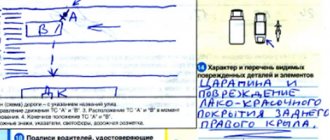What is temporary import of goods?
The customs procedure for importing foreign goods into Russia for a limited permitted period is called temporary import of goods (admission). The advantages of this regime include significant savings in the cost of taxes and duties, which are either absent or the amount of which is lower compared to other regimes. An important condition is the export of such goods in full from the territory of Russia after the expiration of the permitted period. Typically, this provision of the Customs Code applies to exhibition exhibits, structures for organizing fairs, sports equipment, equipment that is used to organize competitions, concerts, etc. Also, the regime applies to foreign cargo that moves across the border of the Russian Federation or is located on storage under customs control.
To confirm the possibility of applying the temporary admission procedure, identification of goods is carried out, which does not take into account containers and packaging. It is important that throughout the entire period of stay, the imported goods remain in their original condition (natural wear and tear is allowed) and at the disposal of the declarant. Such goods can be transferred to third parties only after obtaining the appropriate permission.
Attention! If the goods are not exported within the specified period, then the procedure for release for domestic consumption is applied, which results in the payment of taxes and duties from which it was exempted and a late payment penalty.
The concept of the customs procedure for temporary import
As the name suggests, the main meaning of the customs procedure for temporary import (or admission) is the presence of goods on the territory of the Russian Federation only for a strictly limited time.
Legal regulation of the customs procedure for temporary import of goods is carried out by Ch. 29 of the Customs Code of the Eurasian Economic Union (hereinafter referred to as the EEC Customs Code), as well as Ch. 26 of the Law “On Customs Regulation in the Russian Federation...” dated August 3, 2018 No. 289-FZ (hereinafter referred to as Law No. 289-FZ).
During temporary import, the goods are not actually in free circulation, that is, they cannot be sold or made the subject of other transactions (clause 3 of Article 222 of the EES Labor Code). It is used for a specific purpose for a certain period (Clause 1, Article 219 of the EES Labor Code). Due to this limited use, the product is exempt from most duties and taxes, which is very beneficial to its owner.
For example, a foreign citizen is sent to the Russian Federation for 1 year to study at a university. He arrived in his own car and plans to use it for personal purposes while living in Russia. In this case, he needs to formalize the procedure for temporary import of the car.
Another example would be the transportation of some equipment to the territory of the Russian Federation for its use for some time, after which it will be delivered back, that is, re-exported.
Thus, the three main characteristics of temporary importation are as follows:
You can find more complete information on the topic in ConsultantPlus. Free trial access to the system for 2 days.
- The goods are on the territory of the state only temporarily and remain foreign.
- The goods will be required to be re-exported at the end of a certain period.
- The goods are fully or partially exempt from customs duties.
Features of temporary import
The temporary import procedure is completed based on the identification of the goods being transported. The declarant collects and submits to the customs authorities documents detailing the reasons for temporary admission, and documents guaranteeing subsequent re-export. Customs payments are being calculated.
During the use of temporarily imported goods, wear or natural loss is allowed, which cannot be avoided. It is mandatory to comply with proper storage and operating conditions for such goods that can be tested, inspected, tested, take part in experiments, be repaired (functional improvements in design compared to the original are prohibited), and receive technical maintenance. They must always be in the ownership and disposal of the declarant, who can transfer temporarily imported goods to another person in a number of cases defined by law, without notifying the TO, for example, to carry out repair work or maintenance. The transfer of such goods to other persons, not provided for by legislative acts, must be accompanied by a maintenance permit, which is issued on the basis of a written application by the declarant describing the reason for such need and providing information about the owner or user. At the same time, the declarant must comply with the law regarding conditions and terms and comply with all provisions.
Important! The temporary import procedure can only be applied to foreign goods.
Conditions for temporary import
As we can see, the temporary import procedure in some cases is very beneficial for the owner of the imported property. However, it is not always possible to arrange it.
According to Art. 220 of the EEC Labor Code, in order to register a temporary import regime, the following conditions must be simultaneously met:
- The goods must have identification characteristics that are indicated in the declaration. It must be individualized as much as possible so that it cannot be confused with another similar product during re-export.
- The product must undergo all necessary control measures: veterinary, sanitary and phytosanitary, radiation, etc.
- The product belongs to those categories of goods that can be temporarily imported.
- The restrictions provided for in Art. 7 of the UES Labor Code, including measures of non-tariff and technical regulation, export control, etc.
Law No. 289-FZ also introduces an additional condition - the provision of security for payment of the necessary duties, taxes, etc. (clause 2 of Article 166).
Cannot be subject to temporary import
A fairly extensive list of goods cannot be subject to temporary import (Clause 4, Article 219 of the EEC Labor Code):
- Food products and raw materials for their production, as well as alcoholic beverages and tobacco products.
- Any waste.
- Goods that, in principle, cannot be imported into the customs territory of the union, contained in a special list (Appendix No. 1 to the decision of the Board of the Eurasian Economic Commission dated April 21, 2015 No. 30), for example, ozone-depleting substances, some types of weapons, some types of animals, etc. .
What goods are eligible for temporary admission?
The following goods of foreign origin imported into the territory of the Russian Federation are placed under the customs procedure of temporary import:
- demonstration structures, professional tools, installation equipment to ensure participation in exhibitions, fairs, conferences, competitions;
- musical instruments and theatrical props for concerts and performances;
- mobile gadgets, computers and devices used for business activities;
- equipment necessary for the operation of the media, subject to permission;
- vehicles intended for the above purposes;
- packaging, containers, containers.
What documents are needed for temporary import?
The composition of the package of documents for submission to the TO is determined by order of the Federal Customs Service of Russia dated April 25, 2007 No. 536 and includes:
- documentary evidence of the purposes of admission;
- description of the use of temporarily imported goods with a plan of activities, such as scientific tests, fairs, etc.;
- document identifying the goods;
- a certificate of temporary admission of the non-taxable type with reference to a regulatory act allowing the abolition of taxation;
- documentary guarantees of re-export of goods within the established time limits;
- a statement indicating the time of return removal.
If the cargo was or is under other customs procedures before this regime, the declarant must confirm that all applicable requirements are met without violations. The customs broker may require additional documents.
Terms of temporary import of goods
The general conditions are that the maximum period of stay of temporarily imported goods in the Russian Federation is two years. The period of storage in a customs warehouse may be excluded from the calculation.
The period for temporary import of goods is determined by the Russian Customs Service, taking into account the declared purposes for which the goods are imported into the territory of the Russian Federation. In general cases, the countdown begins from the day the regime opens. An extension period is provided for various categories of goods and depending on the purpose of their import into the territory of the EAEU. This provision does not apply to containers, but is valid for fixed production assets, provided that they are the property of the declarant. Thus, equipment can be under the temporary import procedure for 34 months. The Russian Customs Code describes the procedure for extending the deadline. If the temporary import regime was issued by different declarants, the permitted period still does not exceed two years. The TO has the right to set a shorter period based on current legislation and the characteristics of the cargo.
Temporary import - the period of stay of the cargo on the territory of the state
According to the current Customs Code of the Customs Union, the maximum period of stay of cargo under the temporary import regime can be 2 years. In some cases, this period can vary up or down. The established period depends on the specifics of the product and the purpose of its import into the country.
If the same product is imported by different persons, its period of stay should not exceed 2 years. It is possible to establish a temporary norm, which is regulated by the current legislation of the Russian Federation.
There are a number of goods that are not subject to duties and can be located on the territory of the state for 2 years, but only on condition that the products are not used by residents of the Russian Federation.
In order to import products for a limited period on the specified basis, it is necessary to provide authorized Customs Service employees with detailed information about the classification of the goods, indicating the full name and classification number.
Upon expiration of the established period, the cargo automatically acquires a new status and can be used in any direction, at the discretion of the owner. At the same time, authorized border checkpoint employees should not require data on the import procedure on a temporary basis. The main advantage of this regime is that there is no need to register the goods. An appropriate mark is placed in the customs declaration, which excludes this action.
Procedure for payment of customs duties and taxes during temporary import
The temporary import regime provides for complete or partial exemption from taxes and duties. Among the goods that are not subject to tax:
- cargo related to science, culture, film industry, tourism, imported for the purpose of improving international relations;
- international aid goods, etc.
The final decision on full tax exemption rests with the federal government. If the conditions of the procedure with exemption from mandatory payments in relation to declared temporarily imported goods are violated, or new goods are imported that are not specified in the declaration, then the full amount of tax payments is charged.
Under a regime with partial payment of taxes and duties, obligations to pay arise after the opening of the regime and end when it ends. The payment date is determined by the date of registration of the customs declaration or, if the goods were released before registration, by the date of registration of the application for the release of goods.
The payment deadline is considered the day of expiration of the temporary import of goods or depends on the circumstances, for example, if the temporarily imported goods were transferred to other persons, then the payment deadline is the day of their transfer or the day of registration of the declaration at the customs office. If temporarily imported goods are lost during the regime, the payment deadline is the day the goods were lost and the day the customs declaration was registered by the customs authority, if the day of loss is not determined. The exception is complete destruction as a result of objective reasons.
The amount of customs duties and taxes is 3% of the same duties and taxes that would be charged on the same goods when imported for domestic use. The amount can be paid immediately in its entirety or in installments periodically, but not less than one payment per three months. Periodic payment is discussed between the declarant and the authorized representative of the customs service. Paid taxes and customs duties cannot be returned or compensated as a result of offset of payments.
Important! It is legally determined that customs has the right to demand payment of customs duties if its employees have doubts regarding the fulfillment of obligations on the part of the declarant.
How does the temporary importation of goods expire?
If we talk about the general case, the procedure ends two years after the introduction of the regime, which can be suspended for the period of storage of goods in a customs warehouse. The closure of the procedure occurs after the goods are placed under the customs procedure of re-export, under another customs procedure, if the period has not been extended. Also, early termination of the regime may occur as a result of violation of the conditions of temporary import, for example, modernization of goods.
The procedure for suspension and renewal is determined by a special FCS Commission.
Why is temporary import needed?
The temporary import regime helps strengthen foreign economic relations and develop foreign trade, easing the tax burden for declarants who can take part in scientific conferences, hold concerts, and represent domestic industry at international exhibitions.
Everything about marking goods during import. Only with markings is it possible to go through customs clearance of cargo without delays
List of documents required for customs clearance In each case, to cross the border it is necessary to collect a package of documents for customs clearance
Rates for customs duties in 2021 in a convenient table For the convenience of site users, tables have been compiled to make the information easier to perceive. In 2021, previously approved rates continue to apply.
Main features of the temporary import regime
The legal status of goods under temporary importation is characterized by the following features:
- Imported goods cannot be modified. It must remain in the same form in which it was imported, not counting natural loss or wear and tear, and retain its individualizing characteristics. However, repairs, maintenance, testing and other similar actions are permissible (clause 1, article 222 of the UES Labor Code).
- As a general rule, transactions cannot be made with imported goods, that is, they must be used by the declarant himself (clause 3 of Article 222 of the EES Labor Code). However, such actions can be carried out with special permission from the customs authorities, and in a number of exceptional cases even without permission (clause 4 of Article 222 of the EEC Labor Code), if:
- imported goods are containers;
- the goods are imported for repair, storage, transportation;
- the goods are imported for testing, research, testing;
- in other cases determined by the state.
If the goods are transferred to other persons, this does not affect the duration of the temporary import regime and does not remove other restrictions inherent in this regime.
- The product must be used within the territory of the Customs Union. The only exceptions are vehicles imported for international transport (clause 8 of Article 222 of the EEC Labor Code).










